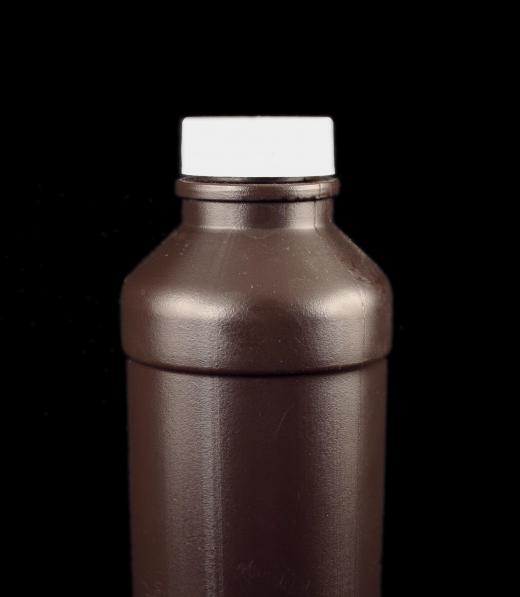Can Hydrogen Peroxide Really be Used As Rocket Fuel?
 Michael Pollick
Michael Pollick
Yes, hydrogen peroxide can be used as rocket fuel, and in fact has been the propellant of choice for the Russian space program for decades. This doesn't mean that the key to everyone's own private rocket company is currently sitting in the medicine cabinet. The form used for rocket fuel is at least a 90% concentration, whereas the disinfectant in a medicine cabinet has been diluted to around 3%. It's still powerful enough to kill germs, but not nearly strong enough to propel a rocket into space.
Concentrated hydrogen peroxide is remarkably stable, considering how much potential power it contains. While medicinal grade products are as close as the nearest retail drugstore, rocket-grade versions can be more difficult to obtain. It is legal to purchase, but it must be stored inside vented aluminum alloy canisters in properly shaded areas, much like gasoline or kerosene. The liquid is not flammable like gasoline, but it can cause serious oxidation burns if it comes into contact with exposed skin.

Unlike the rocket propellants used to power US missiles and spacecraft, hydrogen peroxide does not ignite and burn to generate thrust. Instead, the concentrated liquid is stored inside a special tank pressurized with nitrogen. At the other end of this tank is a conical rocket engine nozzle. What happens next may require a quick scientific explanation.

Hydrogen peroxide is nothing more than ordinary water (H20) that contains extra oxygen atoms, changing it to H202. This oxygenated water wants to release the extra oxygen atom in order to become the much more stable H20. When an element such as silver is introduced to the compound, a catalytic and exothermic reaction occurs. This reaction generates significant amounts of heat and steam. Removing the silver catalyst would end the reaction, shutting down the rocket engine.

When a catalyst pack containing silver disks is inserted into the concentrated and pressurized liquid, the reaction is instantaneous and powerful. In fact, for every unit of liquid peroxide, over 5,000 units of propellant power are created. All of this steam must go somewhere, and that is where the rocket nozzle comes into play. The rocket engine directs the propellant through a narrow passage, then out through a conical shaped nozzle. This propels the rocket or missile skyward.
Although many rocket systems now use a two-fold propellant system with a separate oxidizer and fuel, hydrogen peroxide engines are still very popular for Earth-bound pursuits. Experimental jet packs for individual fliers and booster engines for stunt motorcycles both use it as their propellant. Of all the types of rocket fuel available, many consider it to be the safest, since it is relatively stable, does not require external ignition, and only leaves water in its wake.
AS FEATURED ON:
AS FEATURED ON:













Discussion Comments
With kerosene, hydrogen peroxide, thermite and three heavy duty concentric containers, I could build the equivalent of a tactical nuke -- no nuclear materials needed!
It is a wonderful idea sir, but as far as my knowledge is concerned hydrogen peroxide is a harmful gas, so, if we use that in vehicles does it harm the vehicle.
Are the energy uses for hydrogen peroxide limited to rocket fuel? After reading this article, I am wondering if utility companies could use hydrogen peroxide as a fuel for power generation. The relative stability of hydrogen peroxide as a fuel, combined with the fact that the by-products of the reaction are steam and oxygen make me think that it would be a clean source of fuel.
I am not sure how easy it would be to manufacture hydrogen peroxide in a chemical plant, but it sounds like it could solve some energy problems. I do not know if my ideas have been thought of (I am sure they have been), or if they are economically and technically feasible, but I thought it would be interesting. Does anyone know of any research into this subject?
What an informative article. I am amazed at the potential energy stored in a substance like hydrogen peroxide. Until I read this article, I only assumed that hydrogen peroxide uses were limited to teeth, hair bleaching, and uses as an antibacterial. Cool article wiseGEEKS.
Post your comments